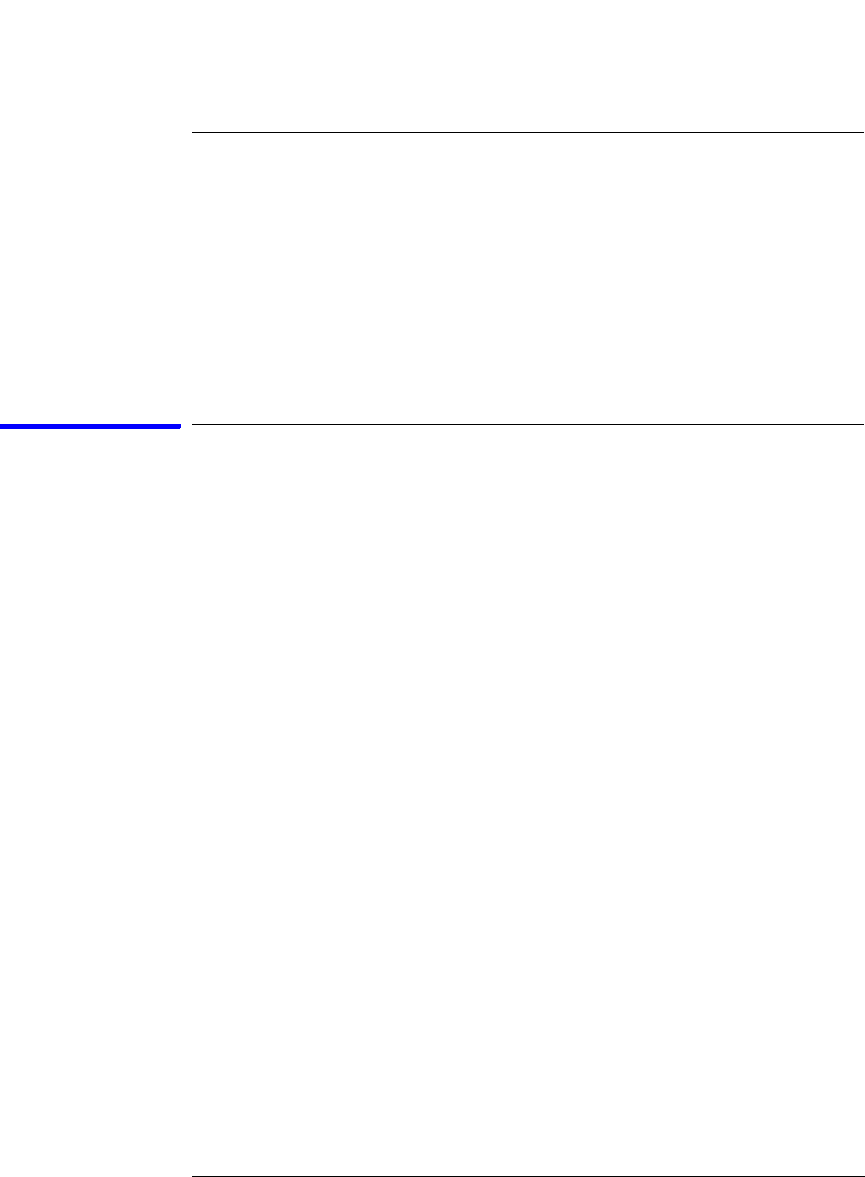User's Manual
Table Of Contents
- Agilent Technologies 16750A/B Logic Analyzer
- Agilent Technologies 16750A/B Logic Analyzer
- Contents
- Getting Started
- Step 1. Connect the logic analyzer to the device under test
- Step 2. Choose the sampling mode
- Step 3. Format labels for the probed signals
- Step 4. Define the trigger condition
- Step 5. Run the measurement
- Step 6. Display the captured data
- For More Information...
- Example: Timing measurement on counter board
- Example: State measurement on counter board
- Task Guide
- Probing the Device Under Test
- Choosing the Sampling Mode
- To select transitional timing or store qualified
- Formatting Labels for Logic Analyzer Probes
- Setting Up Triggers and Running Measurements
- Displaying Captured Data
- Using Symbols
- Printing/Exporting Captured Data
- Cross-Triggering
- Solving Logic Analysis Problems
- Saving and Loading Logic Analyzer Configurations
- Reference
- The Sampling Tab
- The Format Tab
- Importing Netlist and ASCII Files
- The Trigger Tab
- The Symbols Tab
- Error Messages
- Must assign Pod 1 on the master card to specify actions for flags
- Branch expression is too complex
- Cannot specify range on label with clock bits that span pod pairs
- Counter value checked as an event, but no increment action specified
- Goto action specifies an undefined level
- Maximum of 32 Channels Per Label
- Hardware Initialization Failed
- Must assign another pod pair to specify actions for flags
- No more Edge/Glitch resources available for this pod pair
- No more Pattern resources available for this pod pair
- No Trigger action found in the trace specification
- Slow or Missing Clock
- Timer value checked as an event, but no start action specified
- Trigger function initialization failure
- Trigger inhibited during timing prestore
- Trigger Specification is too complex
- Waiting for Trigger
- Analyzer armed from another module contains no "Arm in from IMB" event
- Specifications and Characteristics
- Concepts
- Understanding Logic Analyzer Triggering
- Understanding State Mode Sampling Positions
- Getting Started
- Glossary
- Index

108
Chapter 2: Task Guide
Solving Logic Analysis Problems
Solving Logic Analysis Problems
• “To test the logic analyzer hardware” on page 108
See Also • “If nothing happens when you start a measurement” on page 86
• “If the captured data doesn't look correct” on page 92
• “If there are filtered data holes in display memory” on page 92
To test the logic analyzer hardware
In order to verify that the logic analyzer hardware is operational, run
the Self Test utility. The Self Test function of the logic analysis system
performs functional tests on both the system and any installed
modules.
1. Disconnect all probes of the logic analyzer module.
2. If you have any work in progress, save it to a configuration file. (see the
Agilent Technologies 16700A/B-Series Logic Analysis System help
volume)
3. Disconnect all loads, adapters, or analysis probes from the probe cable
ends.
4. From the system window, select the System Admin icon.
5. Select the Admin tab, then Self Test....
The system closes all windows before starting up Self Test.
6. Select Master Frame.
If the module is in an expansion frame, select Expansion Frame.
7. Select the logic analyzer that you want to test.
8. In the Self Test dialog box, select Test All.
You can also run individual tests by selecting them. Tests that require you
to do something must be run this way.










